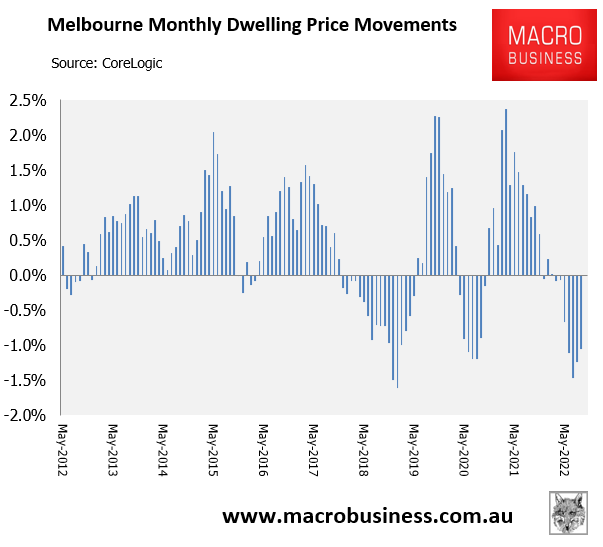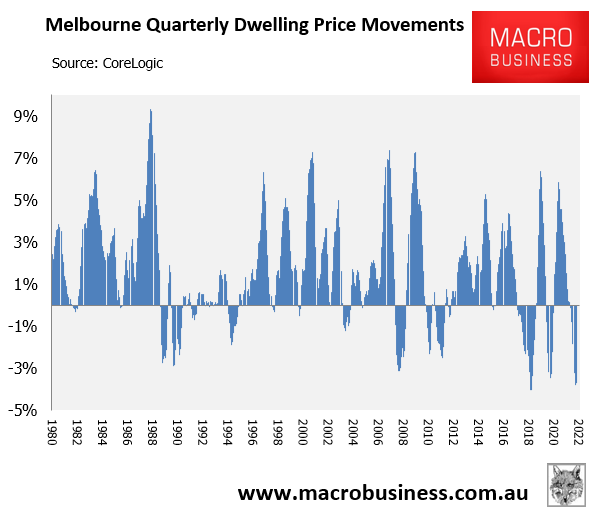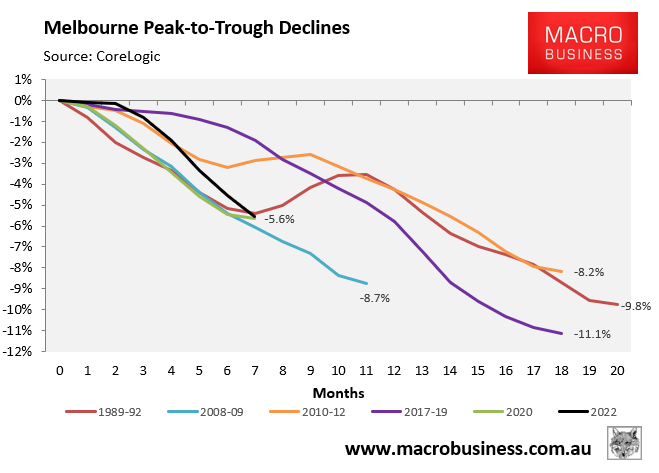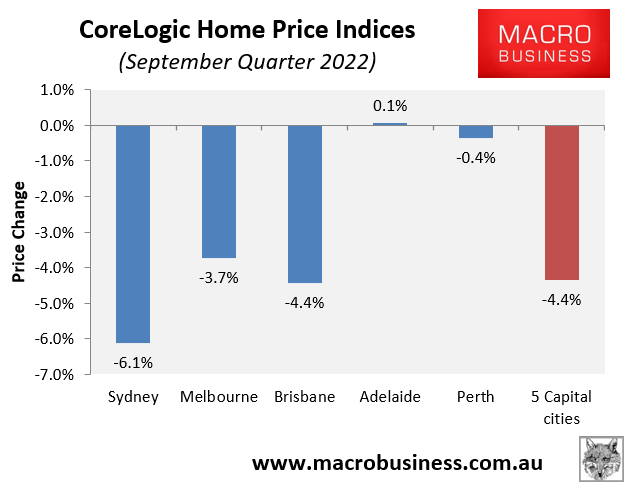CoreLogic’s September dwelling value results posted a 1.1% decline across Melbourne, which was the seventh consecutive monthly fall:

Fifth consecutive monthly house price fall.
Melbourne’s quarterly fall in values moderated to 3.7%, which was a slight improvement from the 3.8% quarterly decline recorded in August. Nevertheless, the quarterly fall was still one of the strongest since records began in the early 1980s, just below the peak quarterly decline of 4.1% in February 2019:

Melbourne’s quarterly house price decline one of the strongest on record.
The next chart compares Melbourne’s current house price decline (shown in black) against earlier episodes, based on CoreLogic’s monthly index:

Equal second fastest house price decline on record.
Melbourne’s current decline has now matched the 2020 early pandemic fall (i.e. -5.6% after seven months). It is also the second steepest on record behind the 2008-09 decline (which was -6.1% after seven months).
However, the current correction is only halfway to matching the record decline of -11.1% over 18 months between 2017 and 2019.
Finally, Melbourne’s quarterly house price decline (-3.7%) was behind both Sydney (-6.1%) and Brisbane (-4.4%) over the September quarter:

Melbourne posted third fastest house price decline in Q3.
This makes sense given Melbourne has experienced a much smaller rise in values over the pandemic – i.e. +4.7% since end-February 2020 versus +14.1% across Sydney and +38.5% across Brisbane.
This smaller increase in values suggests that prices should decline more moderately across Melbourne compared with Sydney or Brisbane.

